[ad_1]
Is your LinkedIn profile failing to generate engagement and customers?
If so, you’re not alone.
What works on Twitter, Instagram, and Facebook does NOT work on LinkedIn.
However, with some tried-and-true LinkedIn strategies, you can boost your engagement and following in no time flat.
I’ve used these exact 19 actionable LinkedIn tips to generate $40,000+ from LinkedIn in the past year.
I’ll also show you the LinkedIn tool that has helped me improve my presence on the platform even more.
Let’s get started!
We’ll cover:
Why your LinkedIn content strategy needs to come first
Don’t start posting content on LinkedIn without a plan!
Why?
It’s not as simple as posting whatever you want and assuming it’ll reach your audience and they’ll engage with it!
Your Linkedin content strategy needs to come first.
Here are 3 reasons WHY.
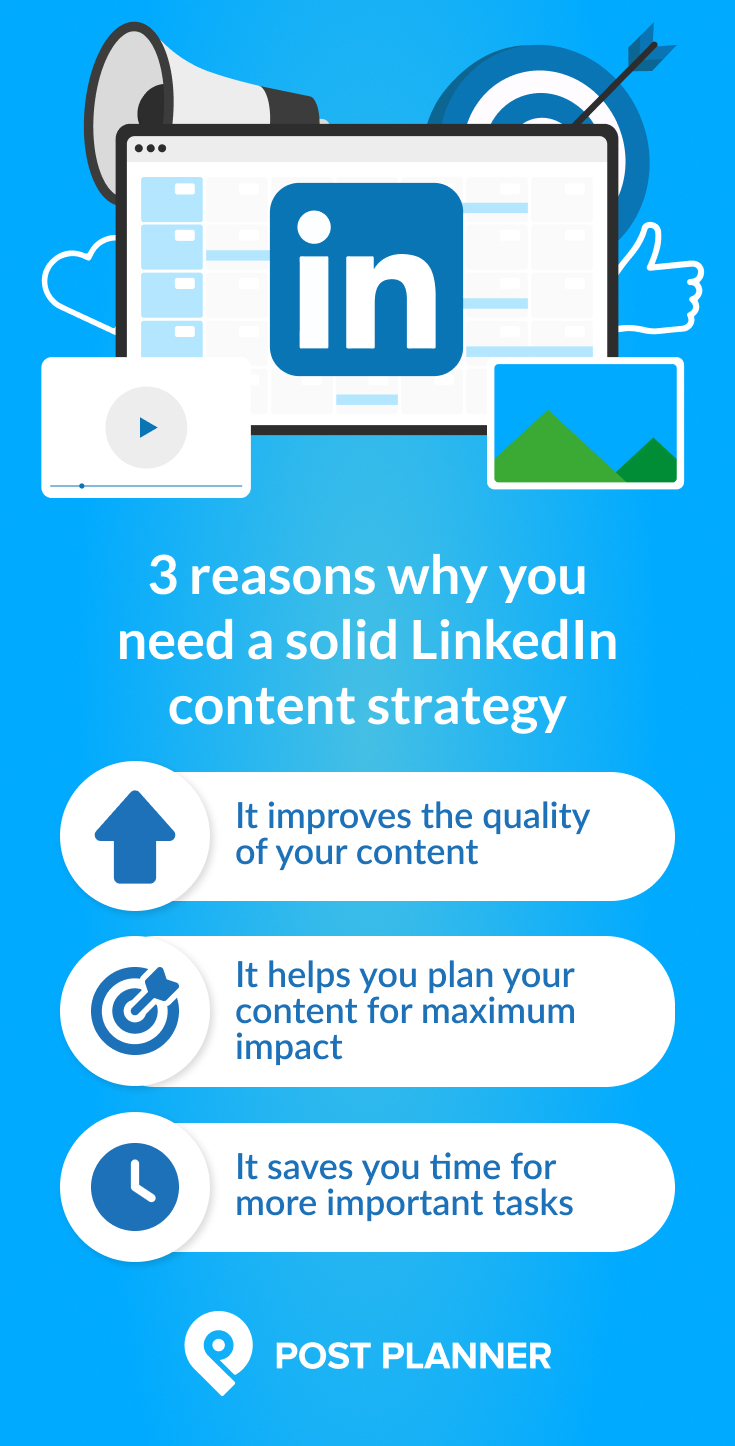
Reason #1: Improve the quality of your LinkedIn content
LinkedIn is a professional platform, and your content needs to reflect that…
Without being BORING!
People expect the businesses and personal profiles they follow to offer them content that provides value.
Rather than always sharing memes or just posting when you get a promotion, you need to share content that is both informative and engaging.
By crafting high-quality content relevant to your target audience, you can position yourself or your company as experts in your field and establish trust with your followers.
And this all begins with S-T-R-A-T-E-G-Y.
Reason #2: Plan out your content for maximum impact
Just like with any social media platform, consistency is key on LinkedIn.
But you can’t just post for the sake of posting. You have to plan your content to ensure your message is clear, cohesive, and focused on your ICP (ideal customer profile).
Think about what your goal with LinkedIn is:
- Are you trying to promote a new product?
- Position yourself as a thought leader?
- Generate new customers?
- Nurture potential future customers?
Whatever your goal, make sure your content is designed to reach your goal.
Reason #3: Save time for more important tasks
One of the biggest benefits of having a LinkedIn content strategy is that it can save you time.
You can plan and work more efficiently rather than scrambling to create content on the fly (which is what most people do).
For example, compare how easy it is to create something to post if you already have an idea of what it should be vs. if you’re just trying to find ANYTHING to share with your followers.
Of course, it’s 10x easier to create a post if you already have a clear direction.
This frees up your time to focus on other tasks and ensures that your content is consistently high-quality and on-brand.
19 Essential elements of a LinkedIn content strategy
LinkedIn is the largest professional network in the world, with over 922 million users.
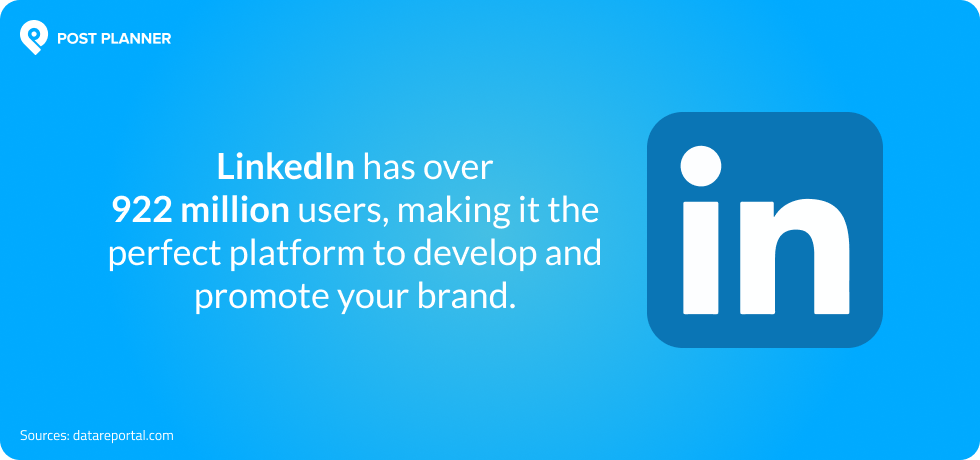
That makes it the perfect platform to develop and promote your brand.
Having a solid LinkedIn presence can significantly benefit you and your business, making it necessary to have a content strategy.
However, developing a great LinkedIn content strategy can be easier said than done.
After all, what should you post? When should you post it?
In the rest of this blog, we’ll delve into the 17 essential elements you need for a successful LinkedIn content strategy.
1. Understand the algorithm
Understanding the LinkedIn algorithm helps you optimize your content. The algorithm rewards posts that stimulate conversation and engagement.
But how does it work?
The LinkedIn algorithm will release your brand-new post to a handful of your followers for about an hour. If it gets engagement, it’ll continue sharing it with other people.
In other words, designing your posts to get engagement is the key to succeeding on this social network–especially if you’re using LinkedIn as a marketing tool.
Look at high-engagement posts like the one below to learn how to execute this strategy properly, but we’ll also share other high-engagement strategies throughout this post.
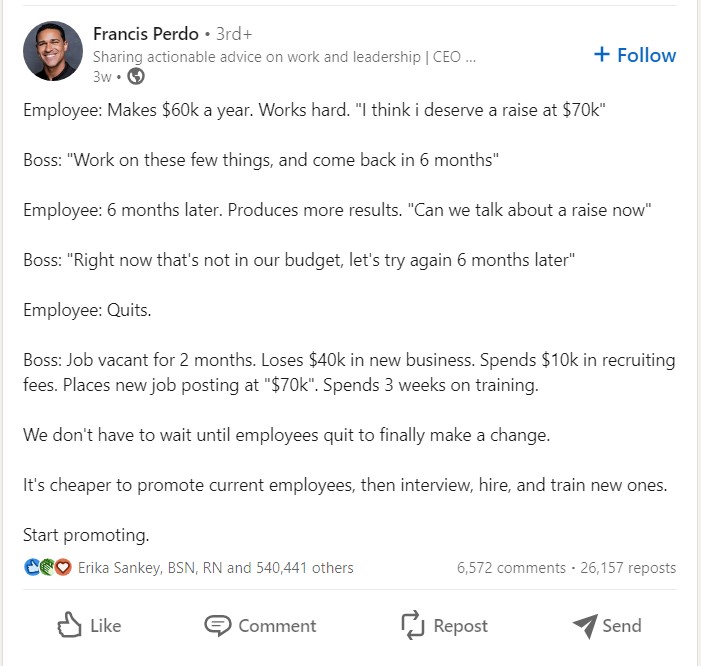
2. Audience and customer research
Don’t just post whatever you feel like. Instead, determine your audience’s pain points and goals so you can align your content topics with what will resonate with them.
You can do this through the following:
- Surveys
- Online reviews from your business and competitors
- Sales conversations
- Just talking to more customers.
Knowing your audience and their pain points is key to creating content that resonates with them. Customer research helps you generate insights that can help you create better content.
3. Post when your audience is most active
When you post is more important than you might think. Your audience isn’t online ALL the time. That means you might miss some engagement if you post when many of them are offline.
When you post at peak times, you increase your chances of visibility which can lead to more engagement and, ultimately, more followers.
One way to determine when your audience is active is by using the analytics section of LinkedIn Creator Tools. Look at how successful your previous posts have been at certain times of day, then post at the times when you get the most engagement.
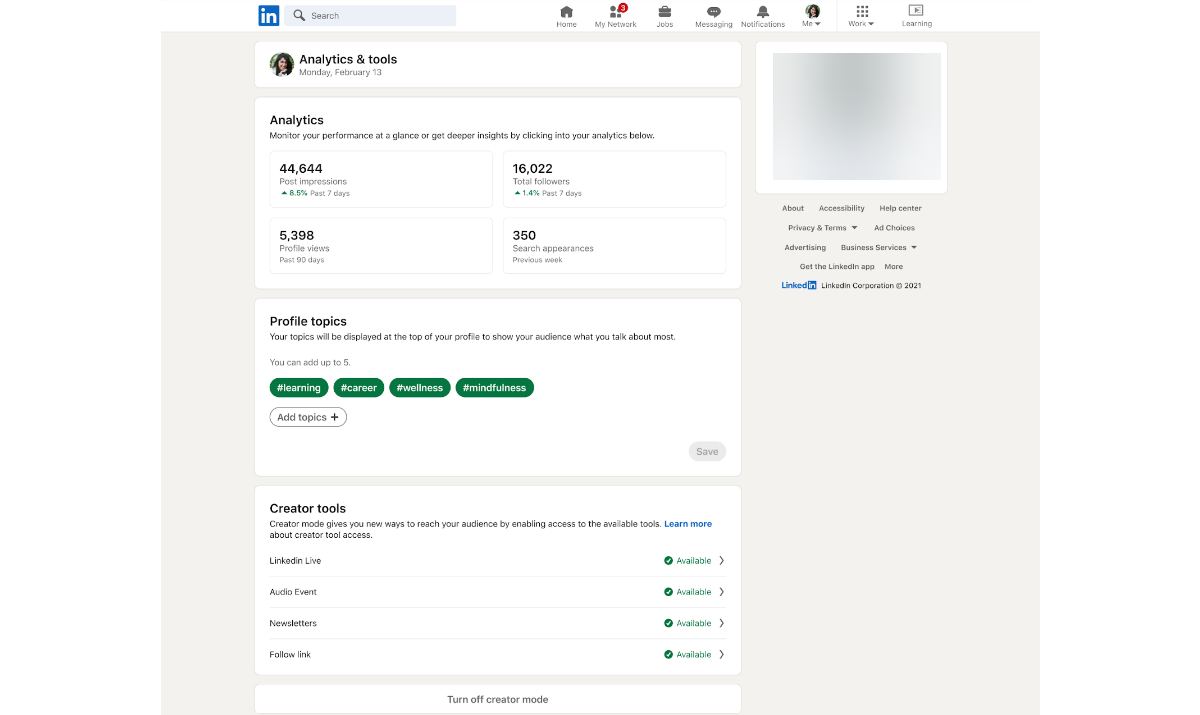
4. Post about your experiences
LinkedIn has WAY too many people that just regurgitate information everyone already knows.
You can stand out on the platform by using storytelling and talking about your personal experiences in your industry.
For example, you can share stories about working with your customers and things you’ve learned in your industry (especially when those stories help build trust with your audience!).
However, be sure not to overshare. Your LinkedIn audience isn’t your therapist. If you share something about yourself being vulnerable, make sure it has a happy ending about overcoming something.
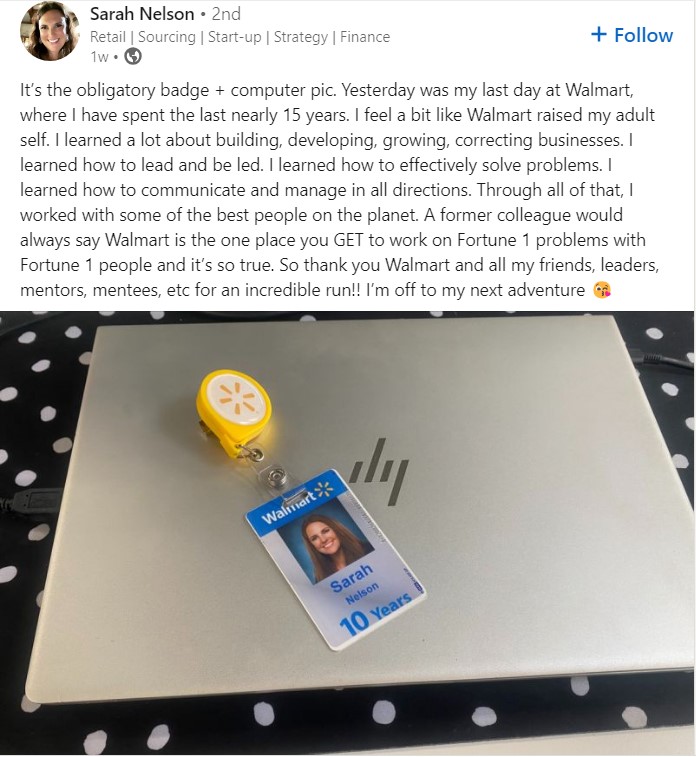
5. High-frequency posting
Posting regularly increases your visibility and keeps you top of mind for your followers.
How often should you post?
Ideally, you should post at least once a day but no more than twice. Too much more than that may make your profile look like spam. Too much less will give your followers time to forget about you, which can reduce engagement.
However, make sure you’re not sacrificing quality for frequency. Keep the quality AND frequency high, and the algorithm will reward you.
Pro Tip: Consider using a LinkedIn post scheduler to help you become more consistent.
Look at the posting frequency of this well-known marketing guru:
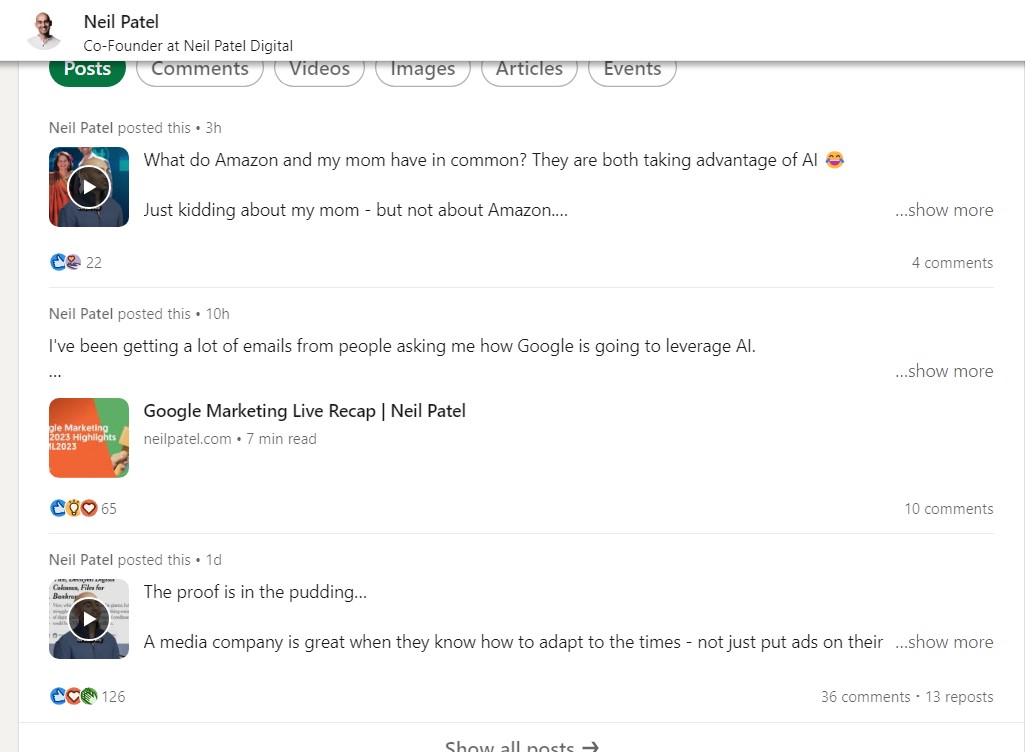
6. Post visual content regularly
Think about what catches your eye as you scroll through LinkedIn. Is it the text posts or the visual ones?
Generally speaking, posts with visually appealing graphics perform better, so include images or videos that entice your audience.
2 great visual elements to regularly include in your LinkedIn strategy are carousel posts and short videos. They stop people from scrolling past your post, so they get great engagement.
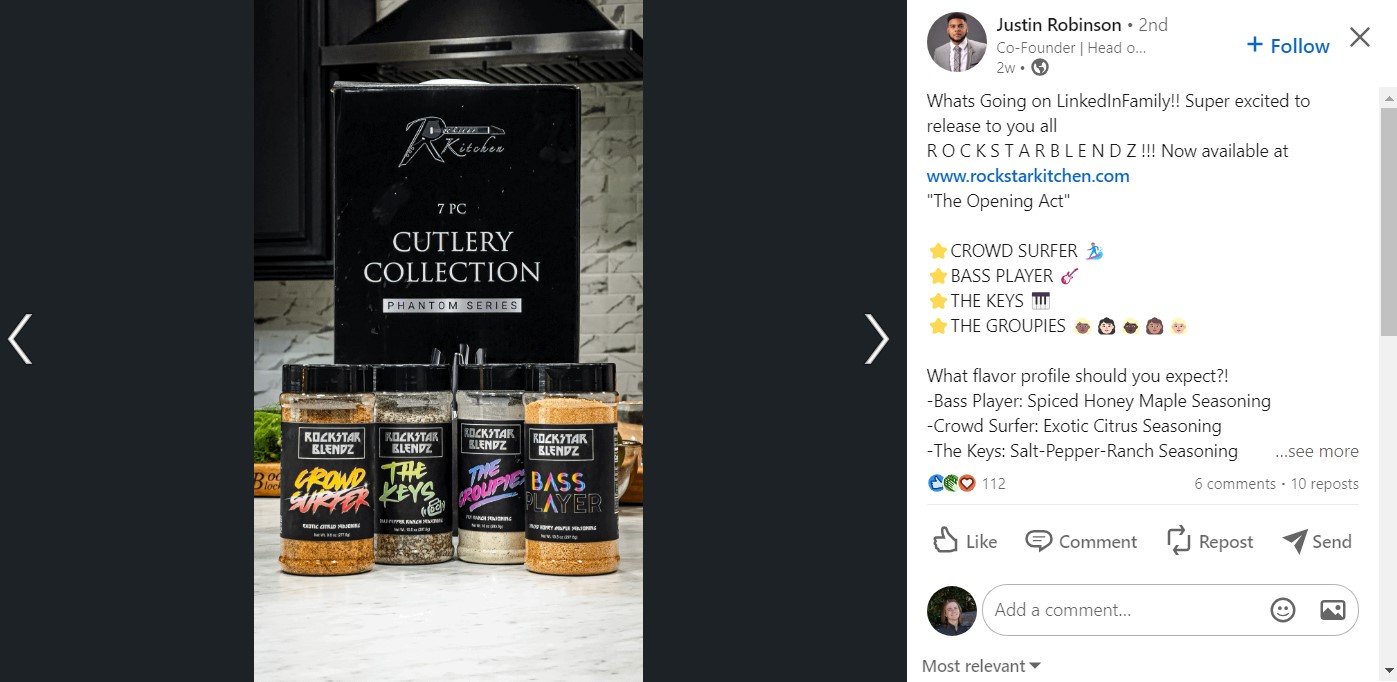
7. Master your hooks
Speaking of stopping people from scrolling to consume your content, let’s talk more about HOW to get them to do that.
Your hooks are the tagline that’ll make your audience want to continue reading your post. Mastering this will make a huge difference in catching your audience’s attention.
On text posts, hooks need to be within 5 lines to get them to click “see more.” Visual posts hooks need to be within 3 lines.
When people click “see more,” it signals to LinkedIn that your content is worth sharing with more people.
A good hook will entice the reader by invoking curiosity and hitting on their pain points. Tell them you have a solution, and they’ll want to click.
For example, look at this visual post that lets readers know about solving problems in commercial real estate:
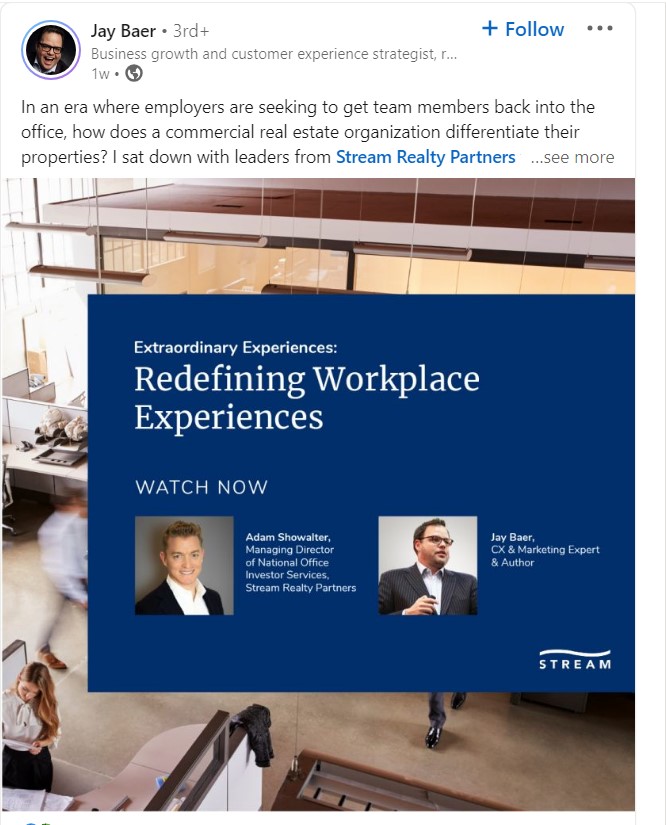
8. Copywriting
Copywriting may not seem like a skill you need to run a successful LinkedIn page, but it’s one of the core skills to get your page noticed.
Any text post you make will require engaging copywriting to get people interested, keep them reading, and encourage them to like or comment.
Invest time into learning to copywrite high-quality content that generates engagement. Here are some tips to get you started:
- Write in short sentences
- Make your posts skimmable and easy to understand
- Start with a hook (as discussed above) to capture their interest
- Use storytelling to increase engagement
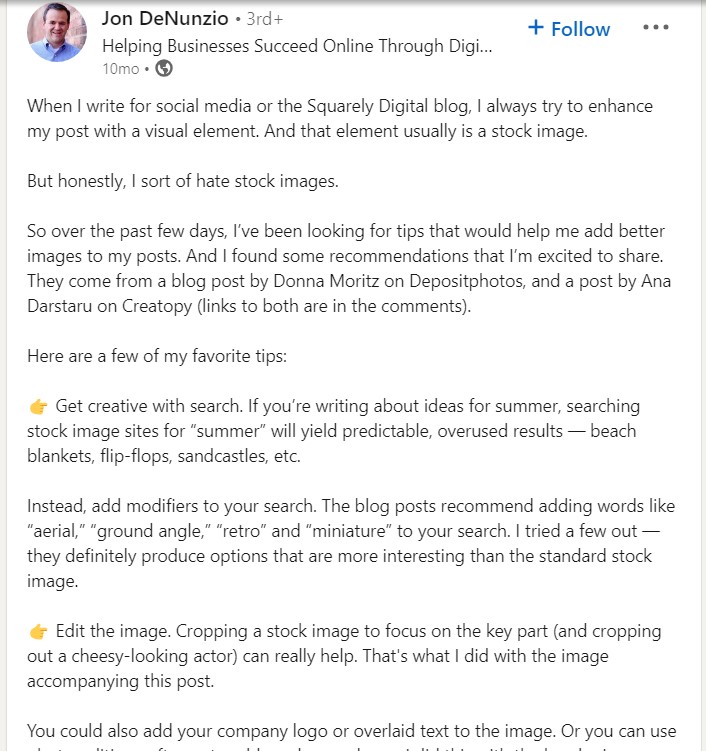
9. Be creative
LinkedIn is a professional network, and most of the content reads like a business meeting (in other words, BORING).
To stand out from the crowd, try to spice up your content with creativity to get people to consume it. For example, you could use:
- Humor
- Varied media formats (videos, carousels, podcasts, etc.)
- Motivational content
- Out-of-the-box copywriting
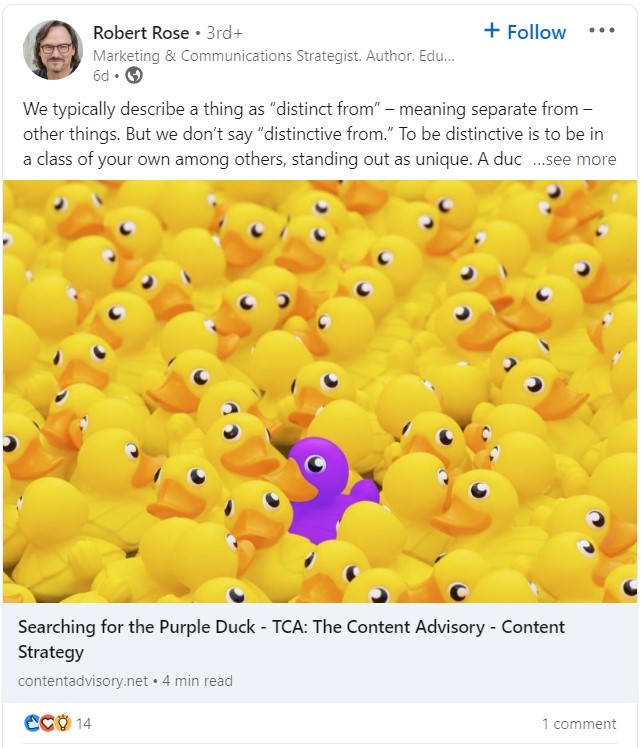
Avoid the mundane and create visually appealing content with unique themes that relate to your industry.
10. Interaction with followers
On LinkedIn, engaging with your audience is key to making the most out of every post. It can help you turn a post from a one-time thing into a few days’ (or weeks’) worth of interaction with your followers.
Maintaining a consistent presence by replying to comments and answering questions. Personalize messages and give thoughtful responses that show you appreciate your followers’ engagement.
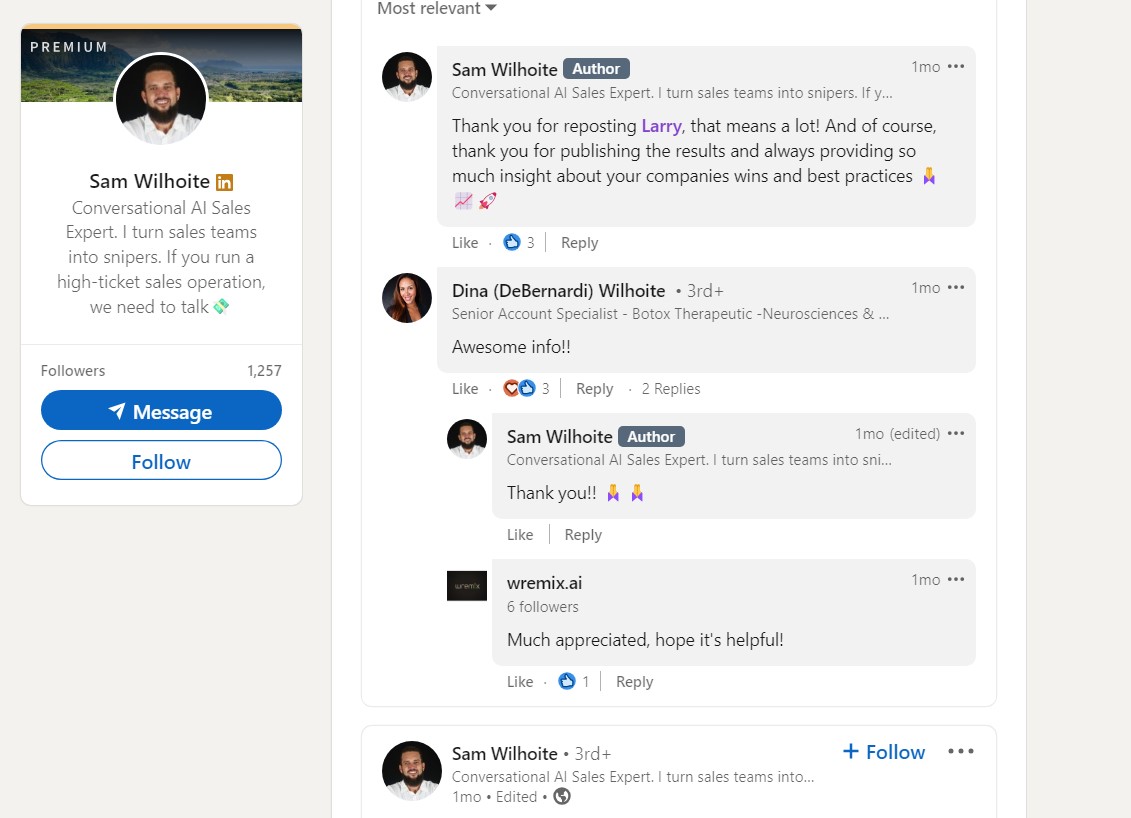
You can also encourage further conversation by asking relevant questions or offering advice on industry-related topics.
11. Engage with industry influencers
You can leverage industry influencers to help generate more interest in your profile. Look for experts and thought leaders in your field who engage with their followers and have a high level of influence on the topics relevant to your business.
Then, start commenting on their posts to establish yourself as an authoritative voice in their field. Demonstrate that you’re knowledgeable about the subject matter by engaging in conversations with the influencers and their followers.
Doing so will showcase your expertise and establish credibility as an industry leader. It may also drive people to your profile and increase your reach over time.
Notice how Donna Stott regularly comments on the posts of someone in her industry with more connections than she has.
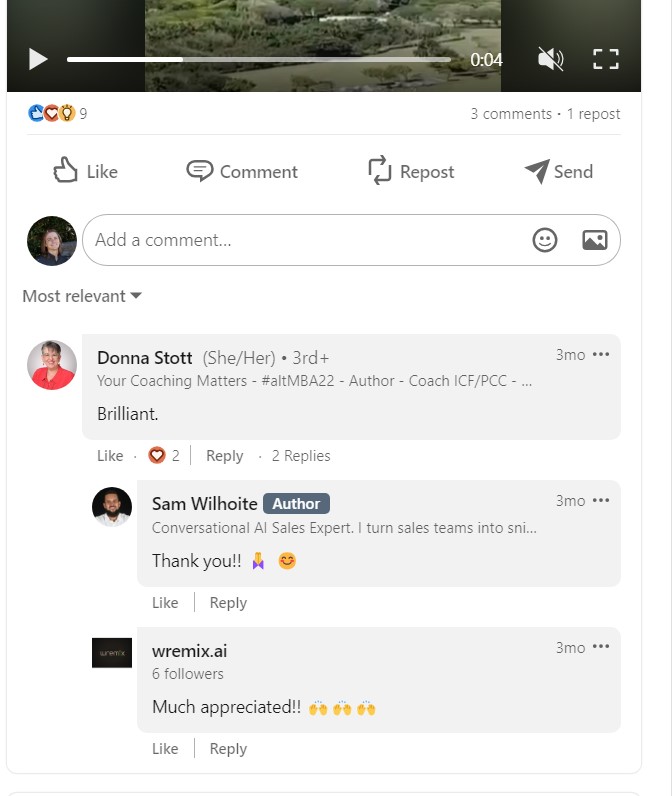
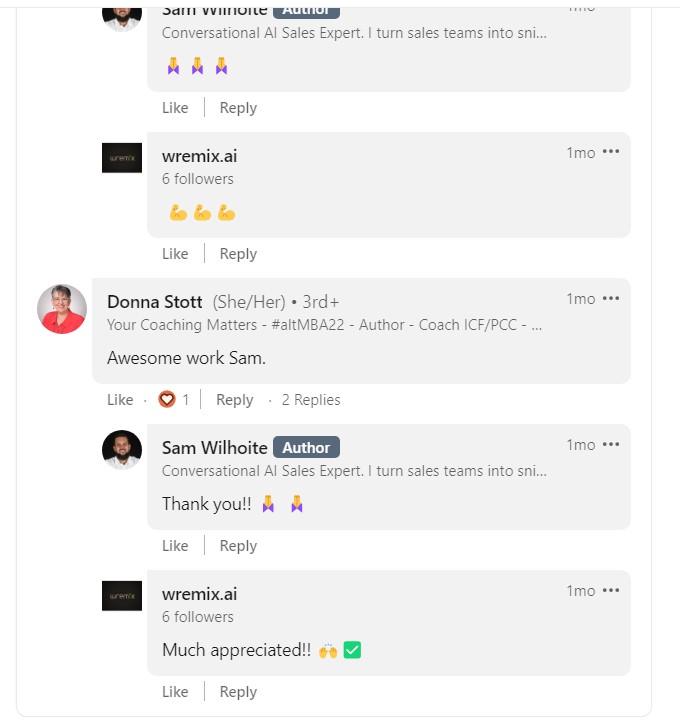
12. Create niche-specific content
When it comes to attracting followers on LinkedIn, using niche-specific content is a great way to do it.
By creating and sharing content that is tailored to the interests of your target audience, you’ll be able to stand out and establish yourself as an expert in your field.
In other words, your LinkedIn shouldn’t be full of random memes or general business advice. It should be full of content that relates specifically to YOUR followers and YOUR industry.
Taking the time to craft engaging and relevant posts will help set you apart from the crowd and earn you more engagement and more followers.
Check out this translating industry tip from a well-known freelance translating educator:
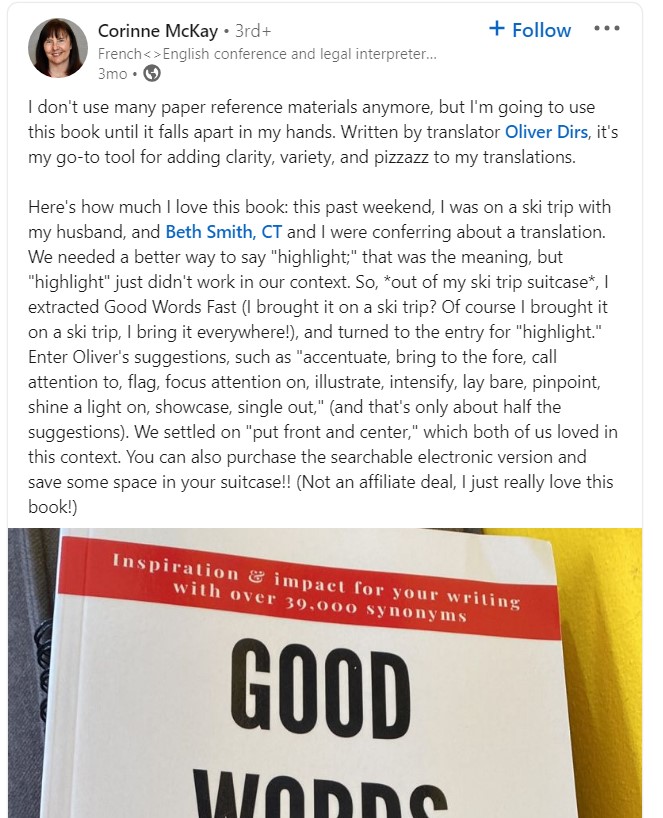
13. Post content relevant to niche trends
Speaking of niche-specific content, you should always ensure that you’re commenting on niche trends.
For example, your niche may be experiencing an important new tool, some important news, or something else that is changing (and is being talked about by other people in your niche).
You don’t want your content to look like everyone else’s, but you also don’t want your page to look like you’re uninformed about the latest news in your niche.
Try to stay on top of the latest trends in your niche and create content that is relevant to that trend to take advantage of the conversation around the topic.
Here’s an example of a couple of pages taking advantage of the recent wave of interest in AI:
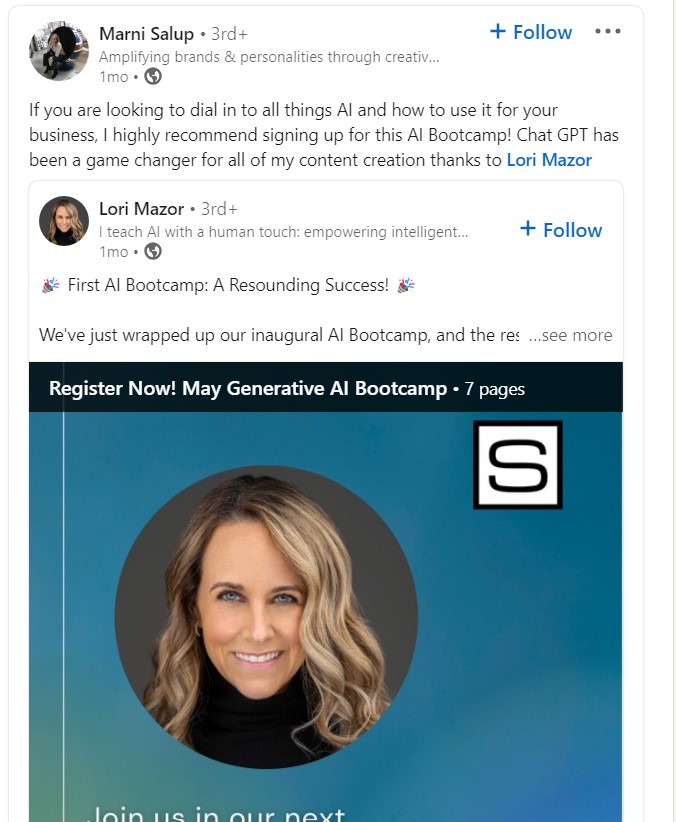
14. Post video content
Video content is becoming increasingly popular across all social media platforms for one reason:
It works.
Videos consistently get high levels of engagement, so you NEED to use them in your LinkedIn strategy.
Videos can also be used to:
- Highlight new products or services
- Educate audiences about topics related to the business
- Entertain
- Discuss news or other important niche topics
Companies should take advantage of video’s high engagement levels by regularly posting high-quality video content on LinkedIn that’ll help build their brand and gain visibility.
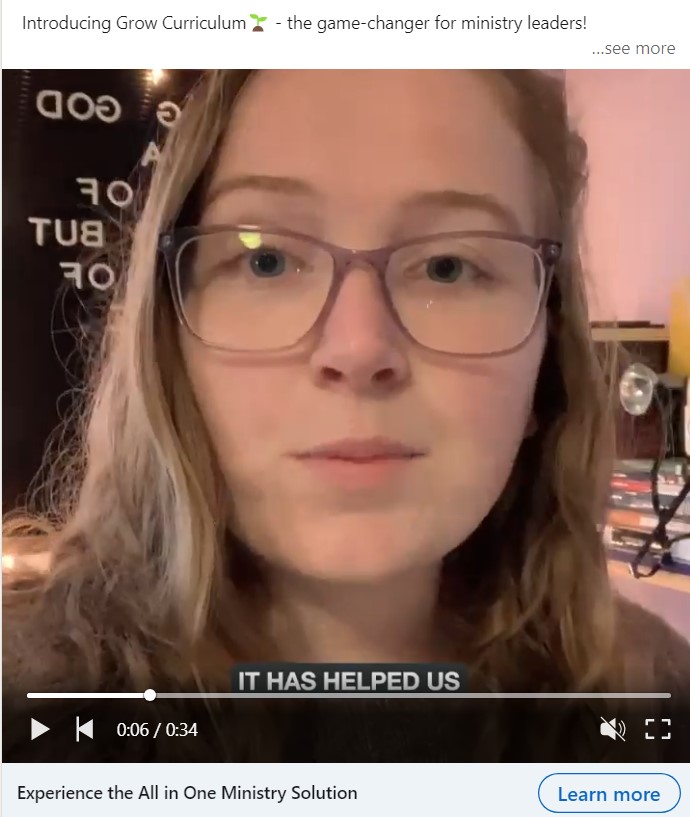
15. Post informative/educational content
People are always searching for helpful information. One of the main reasons people use LinkedIn is to learn more about their niche and to be more in touch with cutting-edge information.
You can take advantage of that by sharing informative or educational content that delivers truly valuable information to your followers.
In other words, make sure your educational content is actually NEW information for the majority of your followers. Otherwise, it’ll just seem rehashed.
For example, take a look at this post sharing a tip about using a calendar tool to get more clients on his schedule:
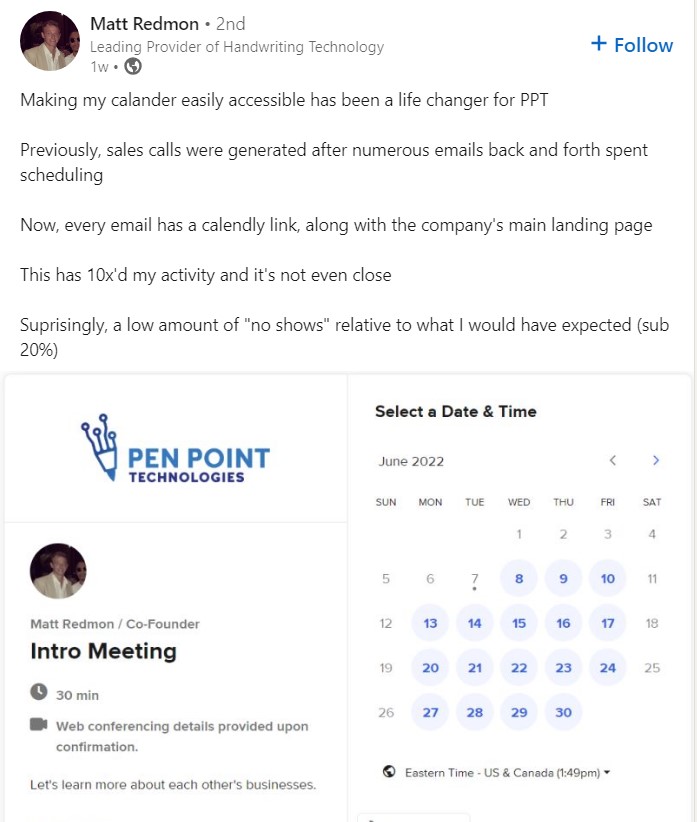
Try these other great educational content ideas:
- Infographics
- Summaries of new studies
- Tips you’ve learned from experience
- Interviews (or clips of interviews) with industry leaders.
16. Create posts designed to get engagement
If you aren’t getting enough engagement, it might be because your posts aren’t designed to make people want to engage with them.
Here are some post ideas that are specifically designed to generate engagement:
- Thought-provoking questions
- Requests for feedback
- Sign-up sheets for community events
Notice how the post below starts with a question designed to get her followers to engage by commenting on the post.
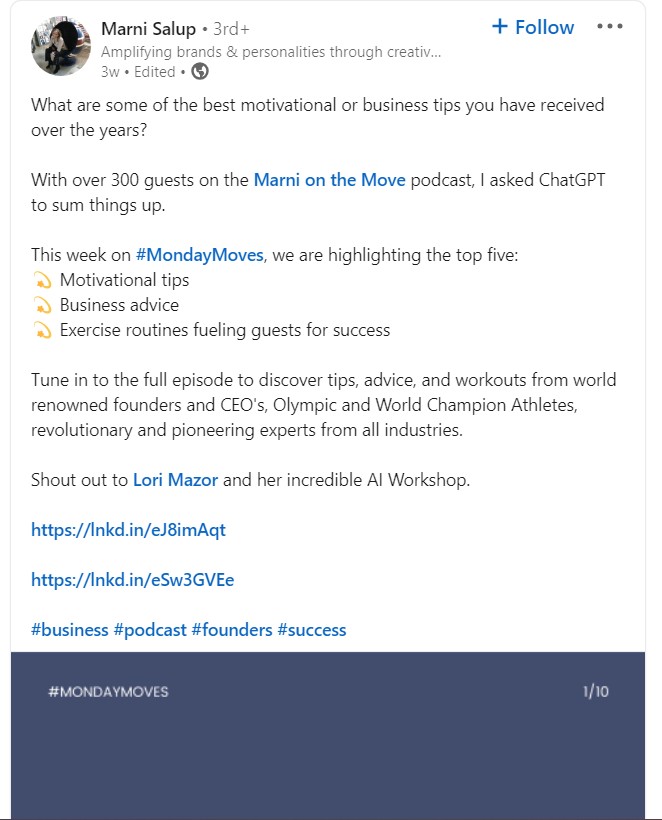
17. Repurpose your content
Why let all your old content go to waste?
Instead, you should recycle or repurpose your past top-performing content.
For example, you could repost a short video clip or turn a popular podcast into a series of short clip posts.
You probably also have high-performing content from other social channels that you could optimize for use on LinkedIn.
Repurposing and recycling old content saves tons of time, makes it easy to fill your content calendar, and produces lots of engagement.
In other words, there are really no downsides.
18. Turn your profile into a landing page
A common misconception in LinkedIn marketing is that it’s all about getting likes and comments.
This is wrong for MOST companies.
The goal of your LinkedIn content marketing is to CONVERT your audience into paying customers.
The key?
Turn your profile page into a landing page like this:
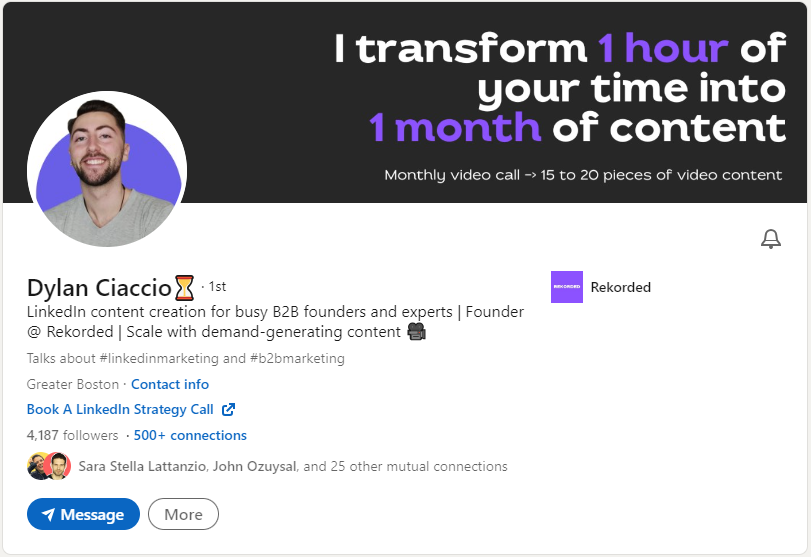 Follow these tips to turn your LinkedIn page visitors into customers:
Follow these tips to turn your LinkedIn page visitors into customers:
- Have a high-quality profile picture of your face smiling
- Create an aesthetic banner that includes your offer
- Add your value proposition in your header
- Add a CTA with a link for your audience to take your desired action (like booking a meeting)
- Add social proof in the form of testimonials or case studies in your “Featured” section
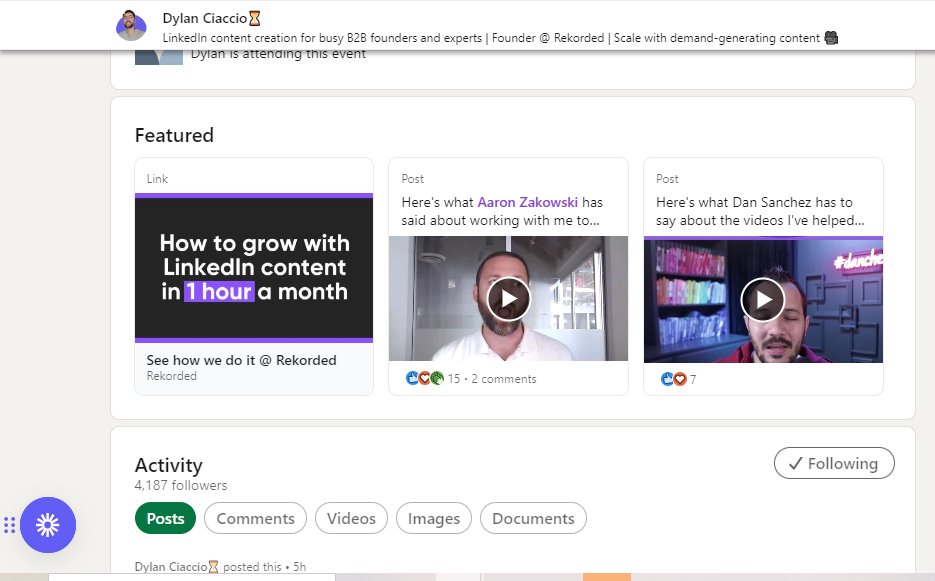
19. Connect with people in your ideal customer profile
If you don’t have many connections and followers, not many people will see your content.
Which means no engagement or sales!
So the key is to grow your audience before you start posting.
How?
Send connections to people that would be ideal customers or other people that are active in your industry.
The best way to do this?
- Find an influencer in your industry that gets a lot of engagement.
- Start sending connections to people that like and comment on their posts!
- Don’t send more than 20 connections per day or 100 per week (sending more could get you banned)
- Once someone accepts your request, send them a personalized message. But DO NOT pitch them, they’ll be less likely to engage with your content if you send them an irrelevant pitch.
As long as you have your profile set up like we showed you above and are active, your connection acceptance rate should be at least 40%.
Any lower means you need to improve your profile.
How to use Post Planner to improve your LinkedIn content
Now that you know what types of content succeed on LinkedIn, let’s talk about how to use Post Planner to execute a successful LinkedIn content strategy.
Post Planner is a social media content curation and LinkedIn automation tool that allows you to quickly find and schedule content from the best sources around the web.
If you aren’t already a Post Planner user, sign up for the 7-day free trial so you can follow along with the tips we’ll give you below.
Create a posting schedule
Post Planner uses a system called content buckets to organize your content plan. Each content bucket you create can be designated for a particular type of content.
For example, you might want one content bucket for each “type” of social media content:
- Humorous
- Motivational
- Educational
- Niche trends
- Any other relevant content types
Then, you can create a queue plan and tell it to draw from specific buckets on specific days of the week. For example, you can post motivational content on Monday and humorous content on Friday.
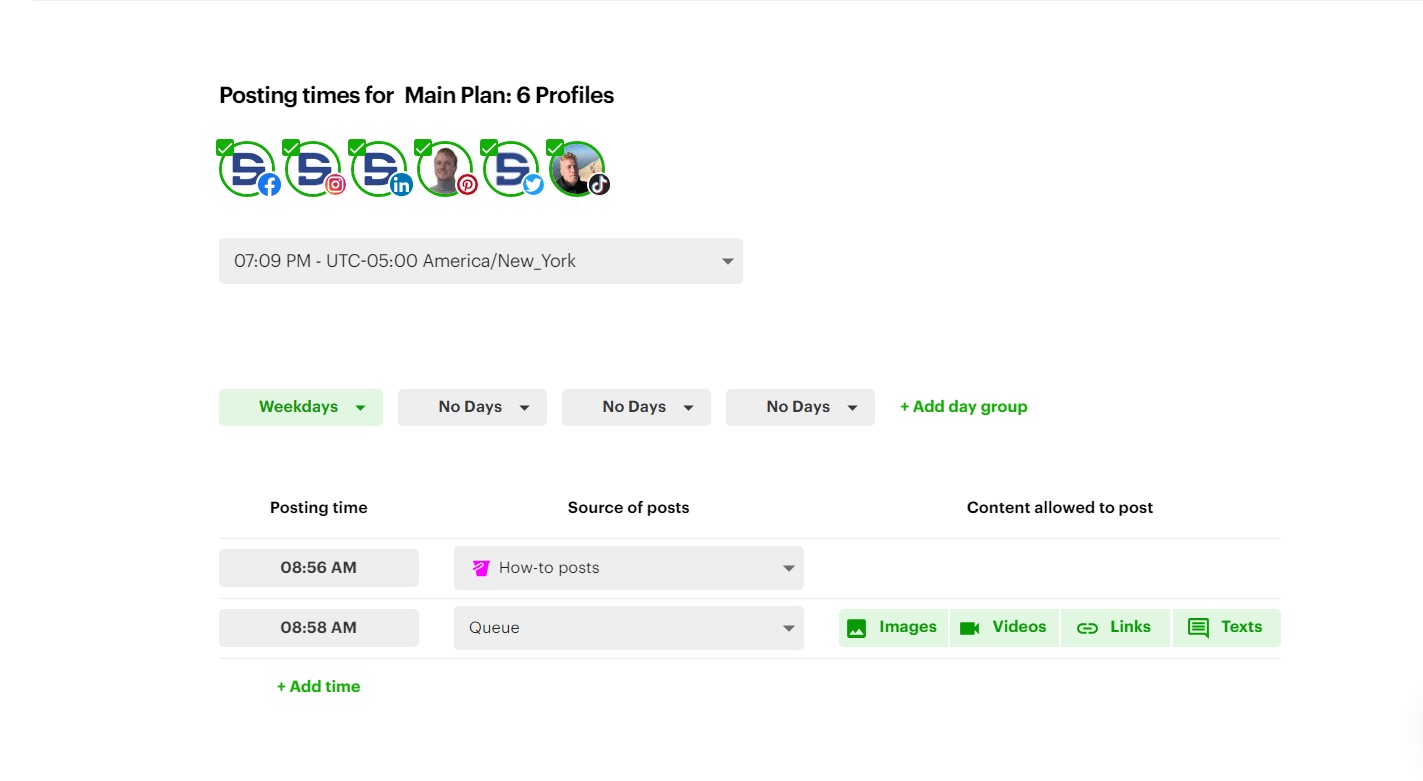
Post Planner will automatically pull content from the correct bucket and post it on the selected day and time.
Add content to your posting calendar
Now it’s time to fill up your content buckets with great content.
The fastest way to do this is to go to the Content tab and search for pre-made Content Streams full of content related to your niche.
For example, I just looked up this Content Stream about running and was able to quickly find some great content in the running fitness niche.
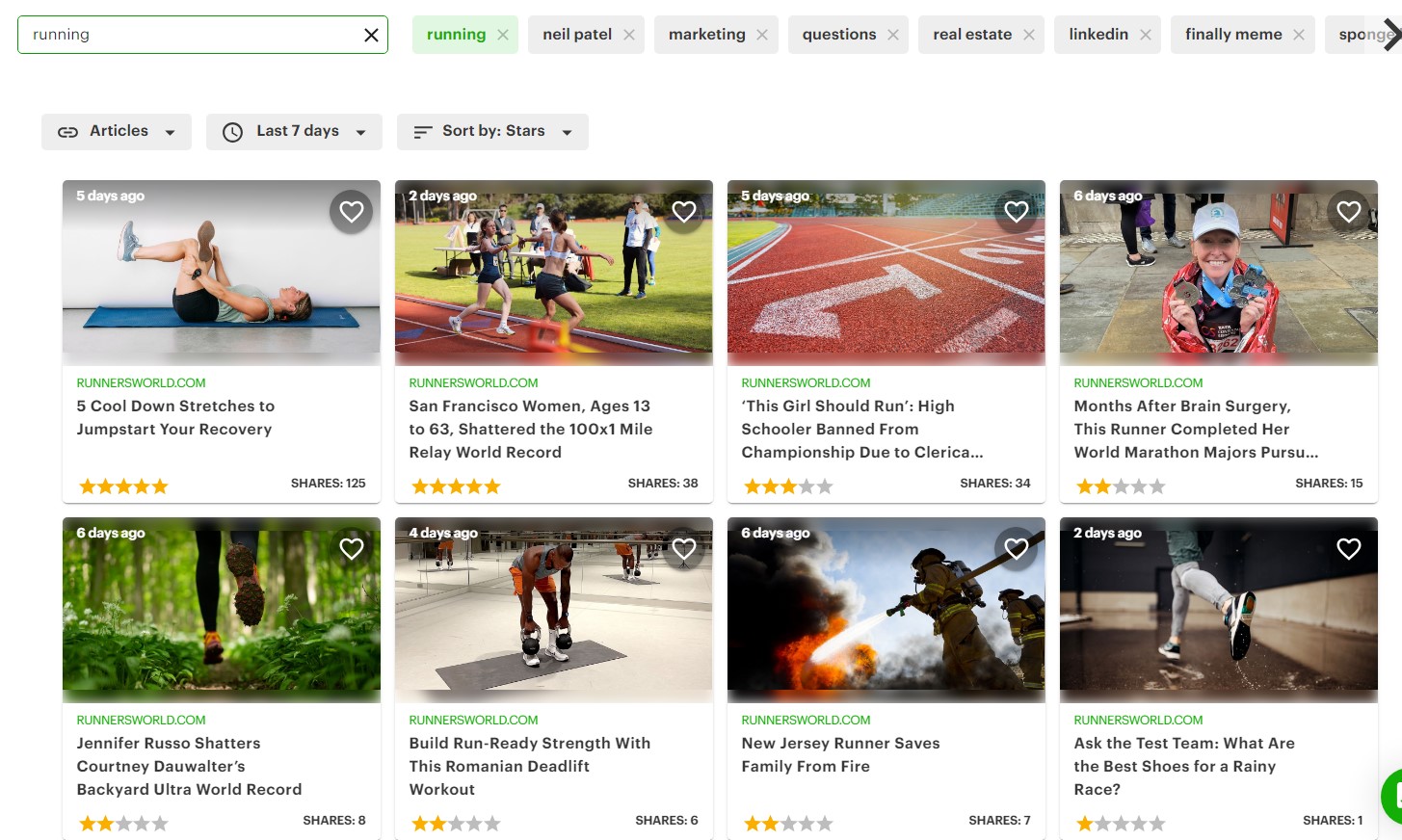
Click on any content you want to add to your calendar, then optimize it for your networks and select which bucket you want to put it in.
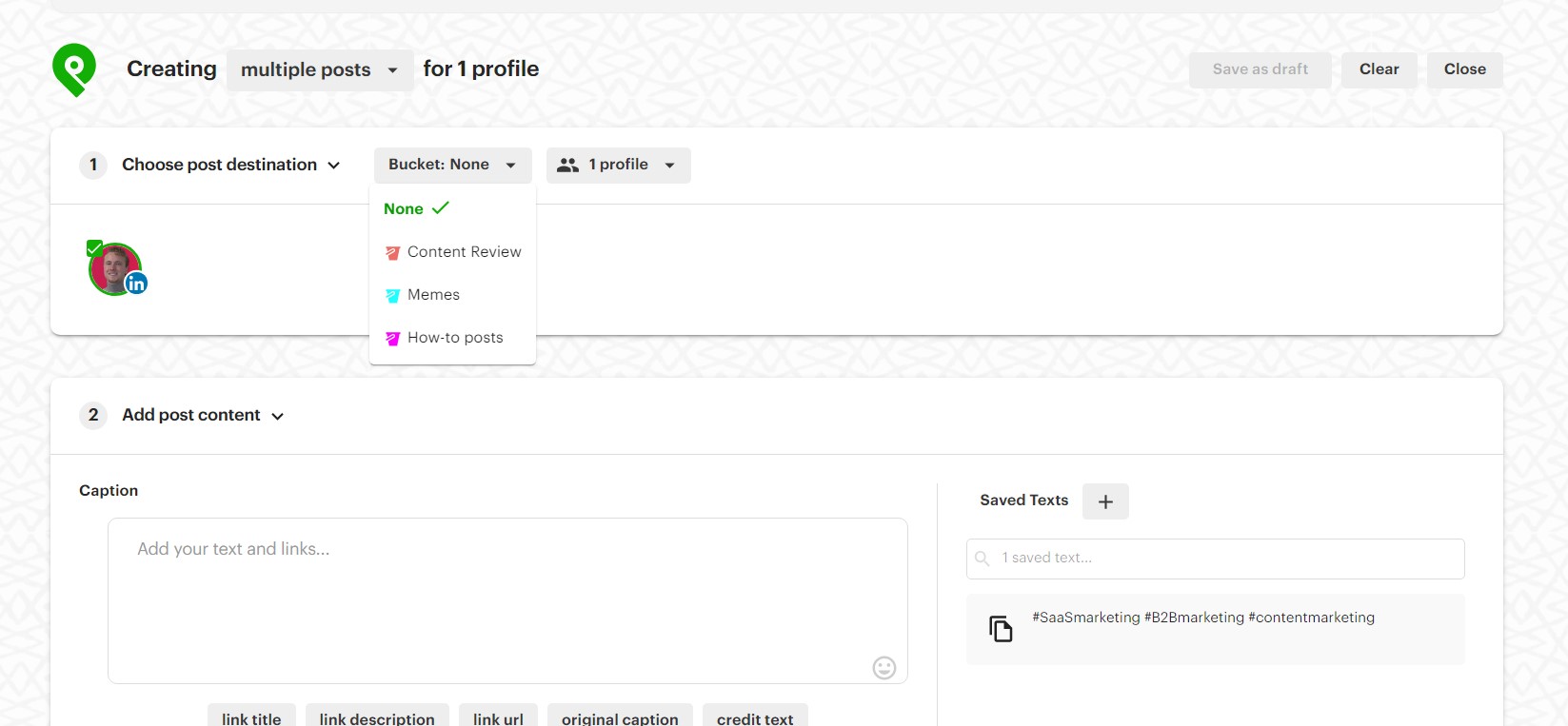
That’s it! Post Planner will do the rest for you.
Recycle your best content
After you’ve been using Post Planner for a little while, you’ll be able to see which pieces of content have performed well and which ones haven’t.
As we mentioned above, you don’t want your precious content to go to waste, so you should definitely consider recycling your best stuff.
Go to the History tab in Post Planner to see the statistics on what you’ve posted, including Likes and comments.
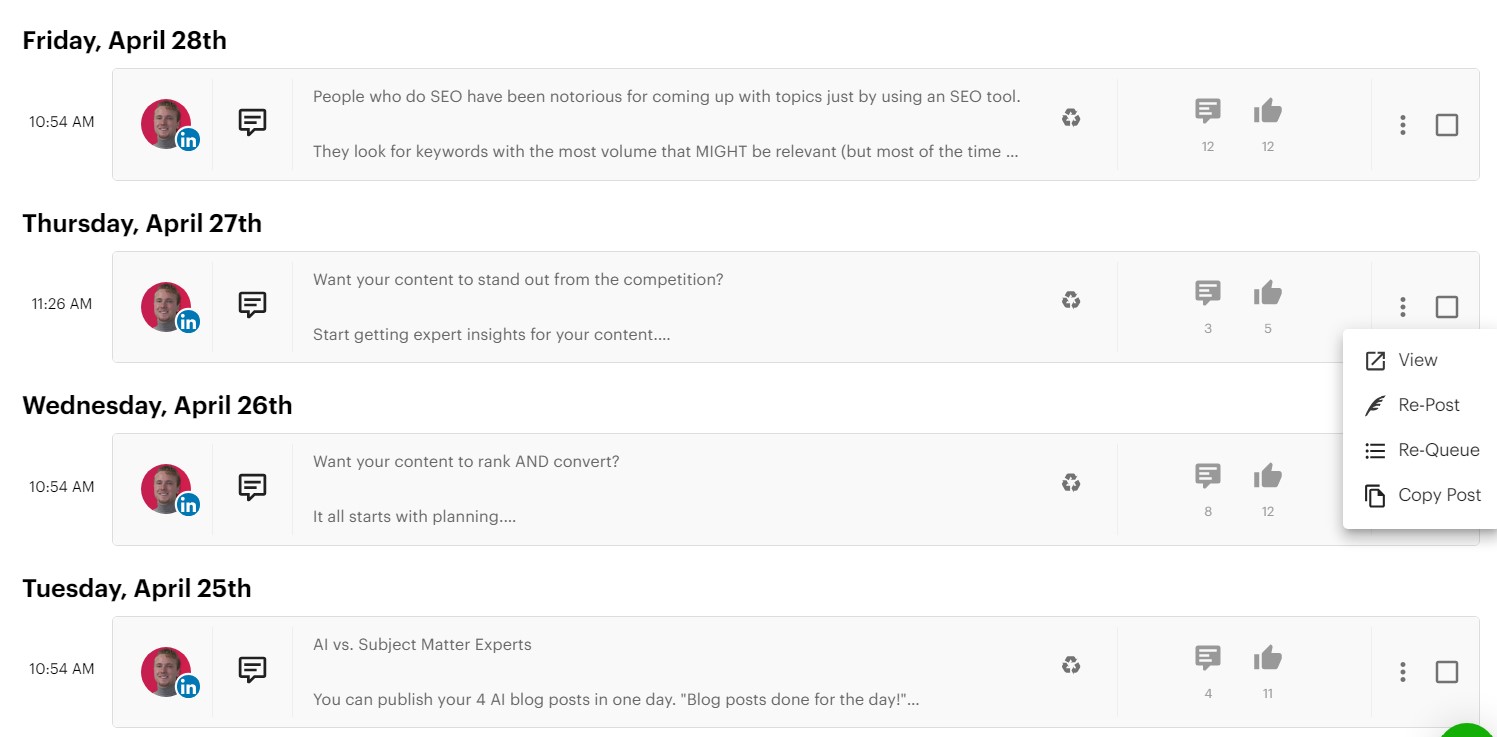
You can quickly add any content you want back into your queue plan from this page.
Conclusion
Developing a solid LinkedIn content strategy is essential for building your brand.
Using these 17 essential elements can help you achieve success on LinkedIn. Just remember to keep your content fresh.
But most importantly, make sure everything you post is HIGH-QUALITY, so you signal to the algorithm that your content is worth sharing.
What other strategies have you used to get more engagement on LinkedIn?
Let us know in the comments!
[ad_2]
Source link



